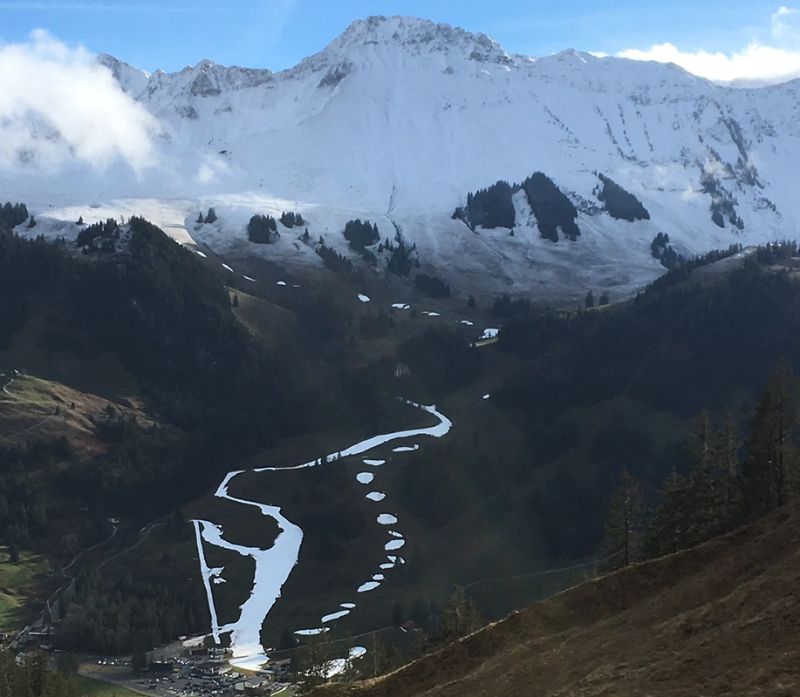Climate change and… winter sports
Skiing, tobogganing, cross-country skiing – winter sports tempt many people into the great outdoors year after year. But these activities are under threat from climate change. As days with sufficient snow get fewer, winter sports enthusiasts are having to be more flexible in terms of scheduling, particularly at lower-altitude resorts.
The long-term trend is clear. Over recent decades, average snow depths have decreased significantly. For example, in Sedrun in the past 30 years they were almost 30% lower than in the previous 30 years, down from 51 to 36 centimetres. In Klosters, the drop was around 43%, from 78 to 44 centimetres. The number of periods with wet snow is already increasing. By the middle of the 21st century, snow at low altitudes – if there is any at all – is likely to melt immediately. Thus, without adequate climate change mitigation, in the next 30 years in the Jura, there will no longer be 50 days of fresh snow per season on average, whereas that was the absolute minimum between 1981 and 2010.
The amount of snow has never been as low as in recent decades
In the long term, depending on location and elevation, there have been up to 60% fewer days of snow in Switzerland in the past 30 years than in the period from 1963 to 1992, according to an analysis by SLF climatologists. Historical records also show that in the past 500 years there has never been so little snow on the Swiss Plateau as in the last few decades. If the earth continues to warm at the current rate, Zurich will see more than a week of lying snow only once in around 15 years from 2050 onwards. Between 1963 and 1992, the average was as much as 34 days – each and every year.
For winter sports resorts, this means that they will either have to diversify or rely even more on artificial (i.e. machine-made) snow than they do already, if they want to remain attractive. But this too has its limitations. Not only do they need sufficient water and energy, but the weather also has to cooperate – at least to some extent. For instance, due to comparatively high temperatures in the winter of 2022/23, many resorts were unable to produce enough artificial snow. Climate scenarios show that, without measures to mitigate climate change, the zero-degree level will rise to altitudes of between 1,100 and 1,300 metres by 2050. Even there, winter sports will no longer be possible with natural snow alone. Lower-lying destinations would be well advised to have a rethink and start developing ideas now about what reasons and activities they can use to attract visitors if there is no snow.
Oversommering the snow
Some resorts are already trying snow farming. This involves stockpiling artificial snow during the winter season and insulating it to ensure there is enough snow for winter sports at the start of the next season. But even this requires the temperatures to be sufficiently low. One thing is clear: SLF researchers agree that in Europe's central, low mountain ranges, winter sports have no future without snow farming and snowmaking. In the next 20 years, snow farming offers a lot of potential, especially for Nordic skiing resorts. For four to five kilometres of cross-country ski trail, they require comparatively little snow, around 15,000 cubic metres. The situation is different for ski slope operators. While some Scandinavian resorts in particular are experimenting with snow farming, this is significantly more energy-intensive and so more expensive, because even small ski slopes require 45,000 cubic metres – three times as much, in other words. SLF researchers are therefore looking at how winter sports resorts can organise their snow management in the future to make the most efficient use of resources.
